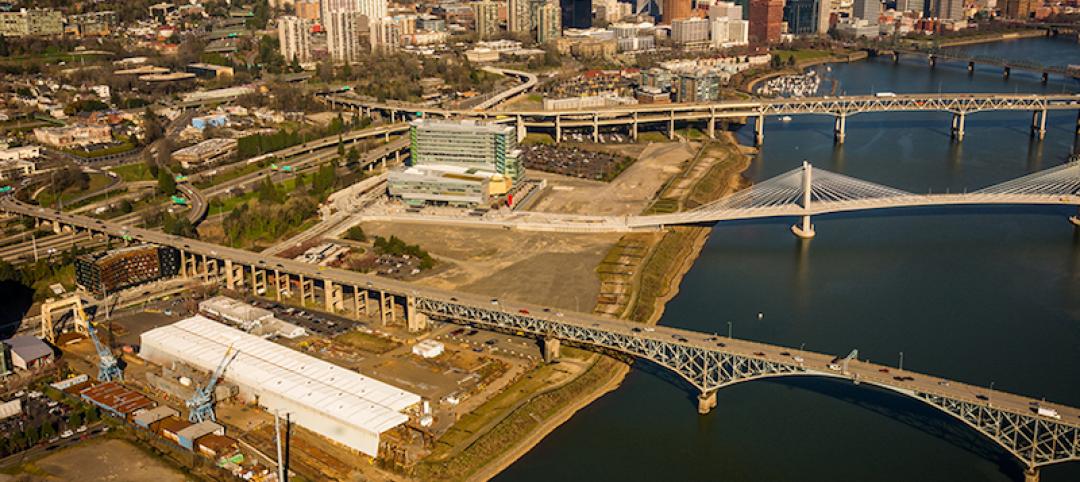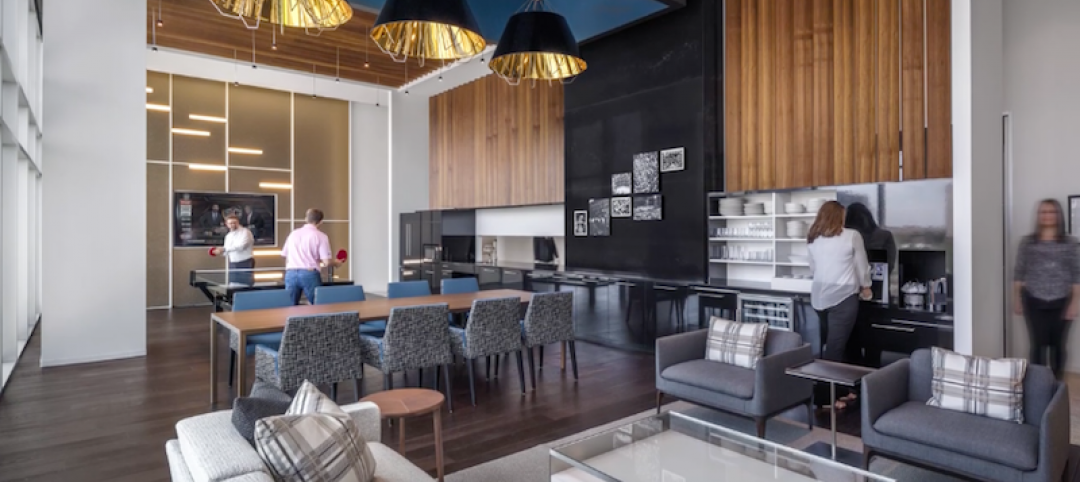The Vancouver office of CBRE Group, Inc. has recently become British Columbia’s first WELL certified workplace for new and existing interiors. The project was awarded gold level certification based on IWBI’s WELL Building Standard.
In achieving the gold level certification, CBRE’s Vancouver office incorporated over 100 wellness features. A staircase interconnects the four adjoining floors and promotes physical activity across the building. To nurture the innate human-nature connection, each floor includes a living tree that adds a biophilic element to employee surroundings. Additionally, a unique wood ceiling in the café was designed as an inverted topographic map of Vancouver meant to add warmth to the space and celebrate local culture.
“At CBRE, we believe that the workplace environment should and can actively benefit the health and well-being of employees, not diminish it,” says Loren Bergmann, CBRE’s Western Canada Managing Director of Workplace Strategy in a release.
The Vancouver CBRE office marks Perkins + Will’s first WELL certified project in Canada. The WELL building standard focuses exclusively on human health and wellness in buildings. It measures, certifies, and monitors building features that affect human health and wellbeing in seven categories: air, water, light, nourishment, fitness, comfort, and mind.
Related Stories
Green | Apr 14, 2017
Sunqiao looks to bring agriculture back to Shanghai’s urban landscape
Vertical farms will bring new farmable space to the city.
Sustainability | Apr 13, 2017
How to make a concrete bunker livable
SOM’s design for New York’s second Public Safety Answering Center leans on strategically placed windows and the outdoor environment.
Green | Apr 11, 2017
Passivhaus for high-rises? Research demonstrates viability of the stringent standards for tall residential buildings
A new study conducted by FXFOWLE shows that Building Teams can meet stringent Passivhaus performance standards with minimal impact to first cost and aesthetics.
Codes and Standards | Apr 6, 2017
Product-specific EPDs seen as key aid to earning green building credits
The product-specific EPDs allow designers to more quickly earn a LEED v4 credit in the Materials & Resources category.
Sustainability | Apr 4, 2017
Six connected CLT towers create an urban forest in India
The mixed-use towers would each rise 36 stories into the sky and connect via rooftop skybridges.
Urban Planning | Apr 3, 2017
Capturing the waterfront draw
People seem to experience a gravitation toward the water’s edge acutely and we traverse concrete and asphalt just to gaze out over an open expanse or to dip our toes in the blue stuff.
Mixed-Use | Mar 27, 2017
The Plant brings terrace-to-table living to Toronto
Curated Properties and Windmill Developments have teamed up to create a mixed-use building with food as the crux of the project.
Sustainability | Feb 28, 2017
Workplace wellbeing
Organizations are starting to realize that there are benefits to addressing employee wellbeing.
Sustainability | Feb 20, 2017
‘Forest cities’ could help solve China’s air pollution problem
The architect behind China’s first vertical forest skyscraper has bigger plans for entire cities filled with vertical forests.
Green | Feb 6, 2017
A to Z: Seoul’s elevated park features 24,000 alphabetized plants
The plants will represent 250 species found in South Korea.

















